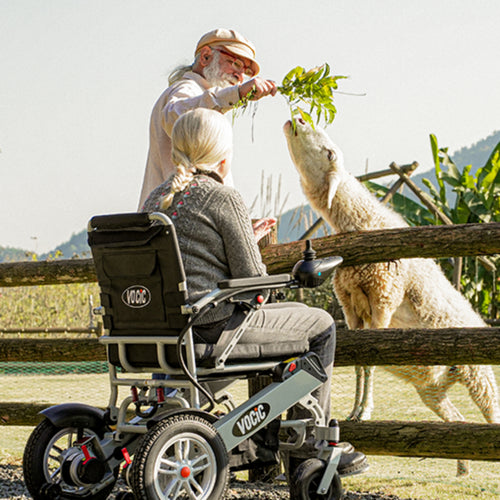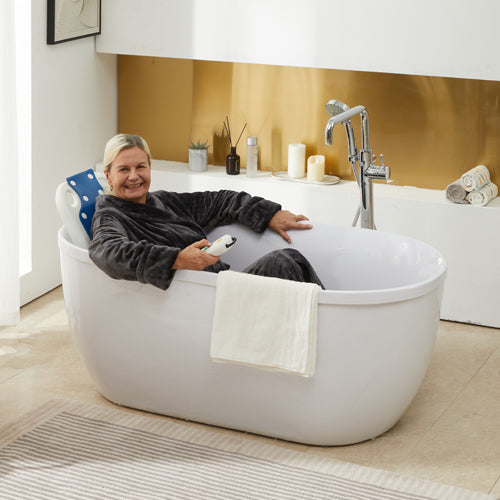Are you looking for a perfect way to safeguard your freedom and mobility? You might need extra support while you are walking on a road. For this reason, always try to go with professionally manufactured mobility products that can bring ease and security to your life. When you choose between walkers and rollators, you may get confused. As a first impression, you will find both products similar, but they have different functions.
In this blog guide, we will help you understand the difference between a walker vs rollator. You will also be able to explore their key features that will immediately help you in making a better buying decision based on your requirements.
What Is a Walker?
A walker is a 4-legged sturdy frame design that provides you with firm support when you are walking. These are lightweight and easy to use. All you have to do is move the walker forward a little distance by lifting or sliding it.
These walkers are suitable for the following individuals:
- Recovering from a recent injury or major surgery.
- Require extra stability and balance.
- Who prefers slow and steady walking.
Very few walkers have two front wheels to make your movement smoother, while others have none for maximum stability. You can commonly use them indoors or on even, flat surfaces.
What is a Rollator?
A rollator is an enhanced version of a traditional walker, which consists of four wheels, brakes, and a padded seat. Plus, a storage bag or basket is sometimes attached to it. When you’re going, you are required to push it instead of lifting.
These rollators are suitable for the following individuals:
- Who cherishes long trips or outdoor walks.
- Individuals who can walk with their own legs but need support.
- Prefer stable, easy, or quick movement.
The VOCIC Z63 Rollator Walker with Big Rubber Wheels is ideally designed for offering comfort and smooth rolling.

What's the Difference Between a Walker and a Rollator?
Your walker or a rollator will always create a major difference when you talk about balance and support in mobility. But with innovative designs and functionality, they both set themselves apart from each other.
Here we will discuss the major difference: a walker vs a rollator to help you in making the best purchasing decision ever. Let’s start unwinding each point.
1. Structure and Design
Walker: It is very steady and safe, with four sturdy legs (some with two wheels). It needs to be slightly lifted with each step.
Rollator: It has hand brakes, three to four wheels, and a seat. It is pushed rather than lifted.
We recommended the VOCIC Z55 2-in-1 Walker Wheelchair Combo. It can function as both a walker and a transport chair.
2. Mobility and Speed
Walker: For steady, slow movement; perfect for recovery and balance.
Rollator: It smoothly rolls for easier and quicker walking.
The VOCIC Z51 Shift Combo is a 2-in-1 rollator and transport chair that offers both mobility and comfort. It provides smooth rolling for easier walks and ensures steady support for recovery and balance.
3. Stability and Safety
Walker: Most stable; ideal for serious balance problems, it doesn't move unless lifted.
Rollator: Although it requires brake control, it is safe.
4. Rest and Convenience
Walker: It lacks a seat. This means you are required to find a chair when you feel tired.
Rollator: Some models feature a built-in backrest and seat, allowing for rest at any time.
5. Customization and Accessories
Walker: You can easily add gliders, pouches, and trays.
Rollator: You will get additional accessories. They include adjustable handles, cup holders, and storage bags.
How to Choose the Right Rollator or Walker to Suit Your Needs?
Understanding the basic needs is the first step towards choosing the correct rollator or walker. Does it make sense to you? Well, it all depends on your active lifestyle and your inner strength. Because without the deep understanding of each, it would be difficult for you to get an ideal mobility gadget.
Suppose you’ve undergone a recent leg surgery and need support for walking and recovery, then a walker would be your choice. However, if you just need extra support and love outdoor activities, choose a rollator because it helps you to move quickly and gives you a break when you are tired. Plus, it offers comfort and freedom.

Tips for Maintaining Rollators and Walkers
Buying a rollator or a walker is easy, but keeping it in good condition for the long term is a challenging task. For this reason, we are going to share some helpful tips and tricks that might help you in the maintenance of walkers and rollators as follows:
- Try to check your wheels and brakes for their smooth functioning and stopping.
- Always wipe down any rust and clean its frame.
- Try to tighten its screws and bolts to prevent it from wobbling.
- Always lubricate its joints and moving parts.
- Immediately replace any damaged wheel or worn grips.
Conclusion
In the end, we can conclude that when you get a chance to choose between a walker vs a rollator, then your decision should not be made on its outer appeal or the designation. But try to consider your individual needs and personal wants. You can be as safe and balanced as possible with a walker. A rollator provides independence, speed, and convenience. At VOCIC, we offer innovative and cutting-edge designs in our various models, such as Z51, Z55, and Z63. These products will provide both if you combine support, comfort, and contemporary style. We have perfectly designed them to make your walking experience safer, easier, and enjoyable.
FAQ
Who should not use a rollator?
A person who is unable to walk properly by himself should avoid using a rollator. In this case, recovery is the priority.
Can a rollator be used as a walker?
Yes, you can use a rollator as a walker. But rollators are specifically designed for rolling rather than lifting.
What is better, a rollator or a walker?
The main function of a best rollator walker with a seat is to provide mobility and comfort, while a walker will offer control and stability. It’s all up to your real needs.
Which is better, a 3-wheel or 4-wheel rollator?
The four-wheel rollator will provide better support and balance. In contrast, a rollator with three wheels is more flexible in tight areas and lightweight.
Can you sit on a rollator and be pushed?
Yes, you can both sit and push the rollator. Our VOCIC Z51 2-in-1 Rollator Transport Chair Walker is an ideal product for this category because it allows you to sit and safely push it.







